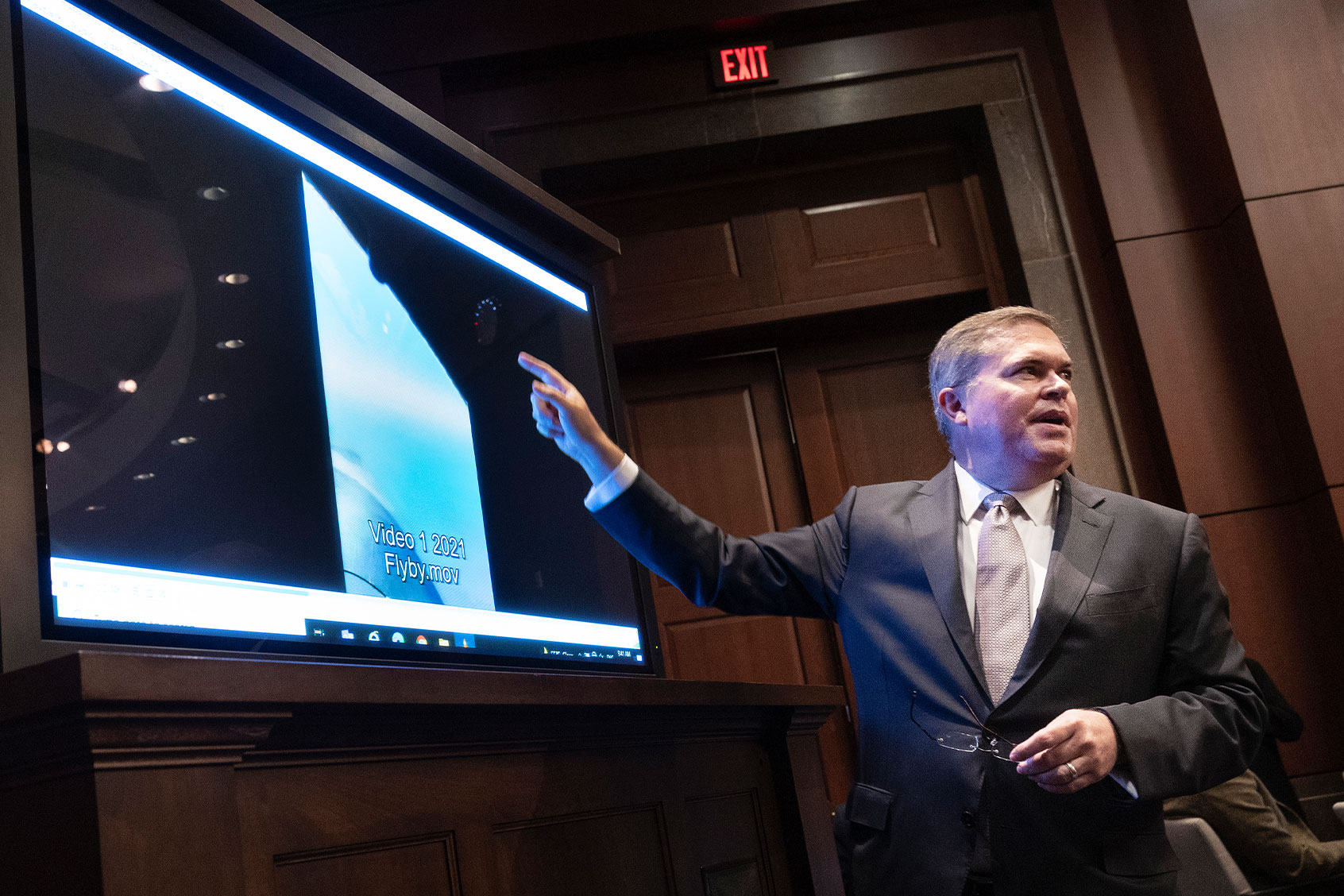
The U.S. Navy is sitting on a trove of videos depicting unidentified flying objects (UFOs), but claims releasing them would be disastrous for national security. The announcement came as a response to a two year legal battle between the Navy and The Black Vault, a website dedicated to highlighting government secrets using Freedom of Information Act (FOIA) requests.
Once the realm of pseudoscience, UFOs — sometimes called unidentified aerial phenomena (UAPs) by the U.S. military and other government agencies — have decidedly entered the political mainstream. In late 2017, the New York Times reported on a secretive Pentagon outfit dedicated to tracking and identifying UAPs. In April 2020, the Navy published three videos of UAPs, called FLIR1, Gimbal and GoFast, although these videos had leaked years prior to their official release.
"The release of this information will harm national security as it may provide adversaries valuable information regarding Department of Defense/Navy operations, vulnerabilities, and/or capabilities," Gregory Cason, deputy director of the Navy's FOIA office, wrote in the denial.
In the GoFast video, for example, a pilot of a F/A-18 Super Hornet fighter jet tracked a high-speed object as it zips across the Atlantic Ocean off the coast of Florida. A pilot can be heard saying, "What the f**k is that thing?!" If the Navy ever learned what the object was, it has not announced it publicly.
Bloggers for The Black Vault assumed there were more videos like these, and filed a FOIA request. Two years later, after much back and forth, the Navy finally responded, confirming the Vault's suspicions, but then refusing to share any additional info, deeming it classified. It is not clear how many videos or images of UAPs the military currently has kept secret.
"The release of this information will harm national security as it may provide adversaries valuable information regarding Department of Defense/Navy operations, vulnerabilities, and/or capabilities," Gregory Cason, deputy director of the Navy's FOIA office, wrote in the denial. "No portions of the videos can be segregated for release."
Nonetheless, the fact that UAPs have received some level of official recognition in recent years has been both validating for conspiracy theorists, who have long sought hard evidence of alien visitors; and frustrating for many scientists, many whom argue this is far from enough proof for life outside our solar system.
"I think it's very, very difficult as a scientist to look at something like this and say anything except, you know, it's intriguing," Caleb Scharf, an astronomer and director of the Columbia Astrobiology Center, told Business Insider in 2019. "It's all reliant on serendipitous data. And that's one of the most difficult kinds of problems to solve in science. So I'm not surprised that we don't have a good answer yet."
Even so, even NASA appears intrigued by what UAPs may or may not be. In June 2022, the space agency announced their own intent to investigate UAPs by forming an independent study team that examines the issue from a scientific approach.
"NASA believes that the tools of scientific discovery are powerful and apply here also," Thomas Zurbuchen, the associate administrator for science at NASA Headquarters in Washington, said in a statement. "We have access to a broad range of observations of Earth from space – and that is the lifeblood of scientific inquiry. We have the tools and team who can help us improve our understanding of the unknown. That's the very definition of what science is. That's what we do."
The project is expected to take nine months, and will require NASA to gather as much data on the issue as possible. It's not clear if they'll have access to the Navy's confidential archive.
For their part, the Black Vault has filed an appeal seeking the release of the Navy's videos.
"While three UAP videos were released in the past, the facts specific to those three videos are unique in that those videos were initially released via unofficial channels before official release," Cason wrote in the denial. So to really find out what the Navy is hiding may require another back-channel disclosure. Until then, we'll have to continue to emphasize the word "unidentified" in "unidentified aerial phenomena."







